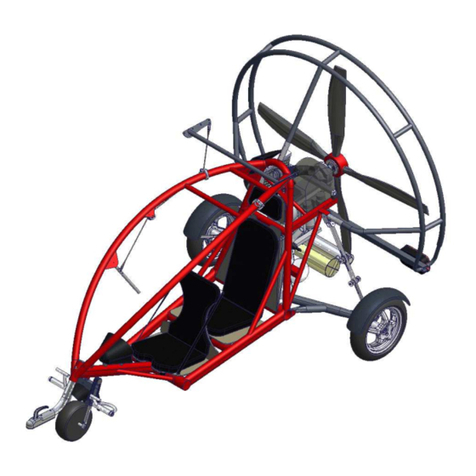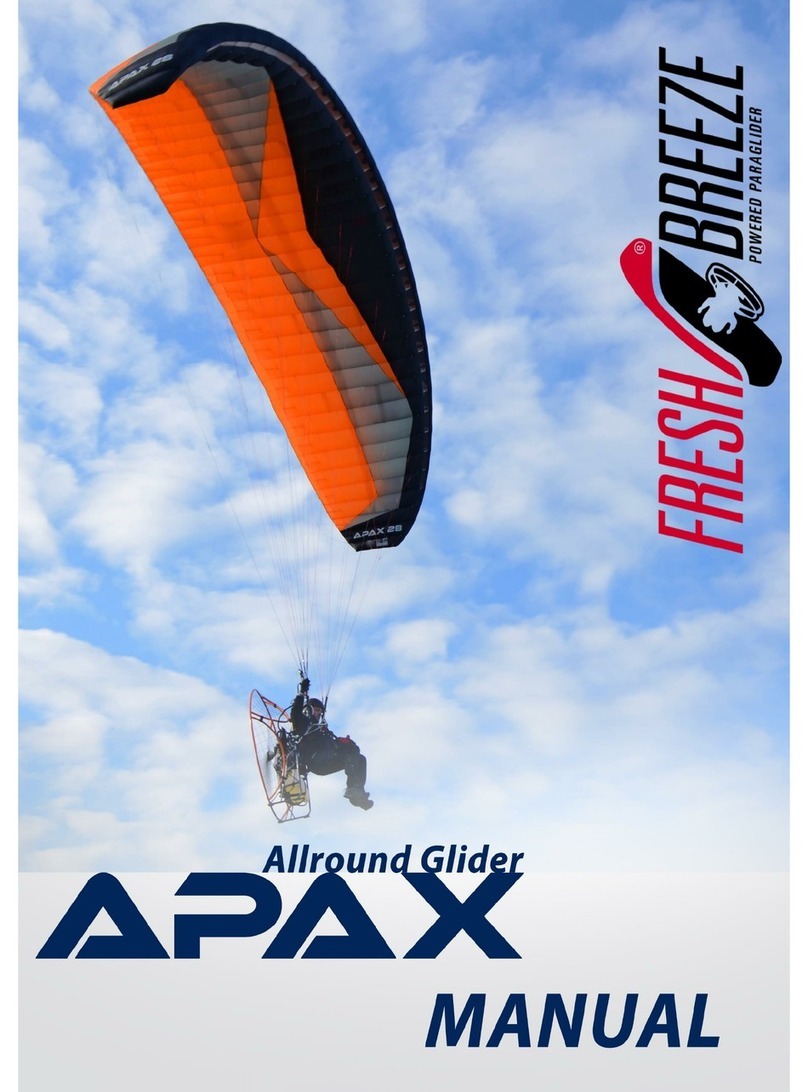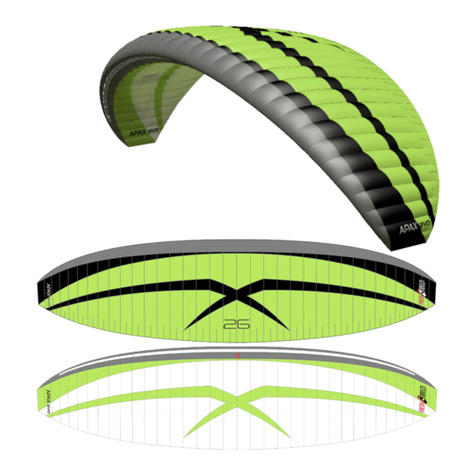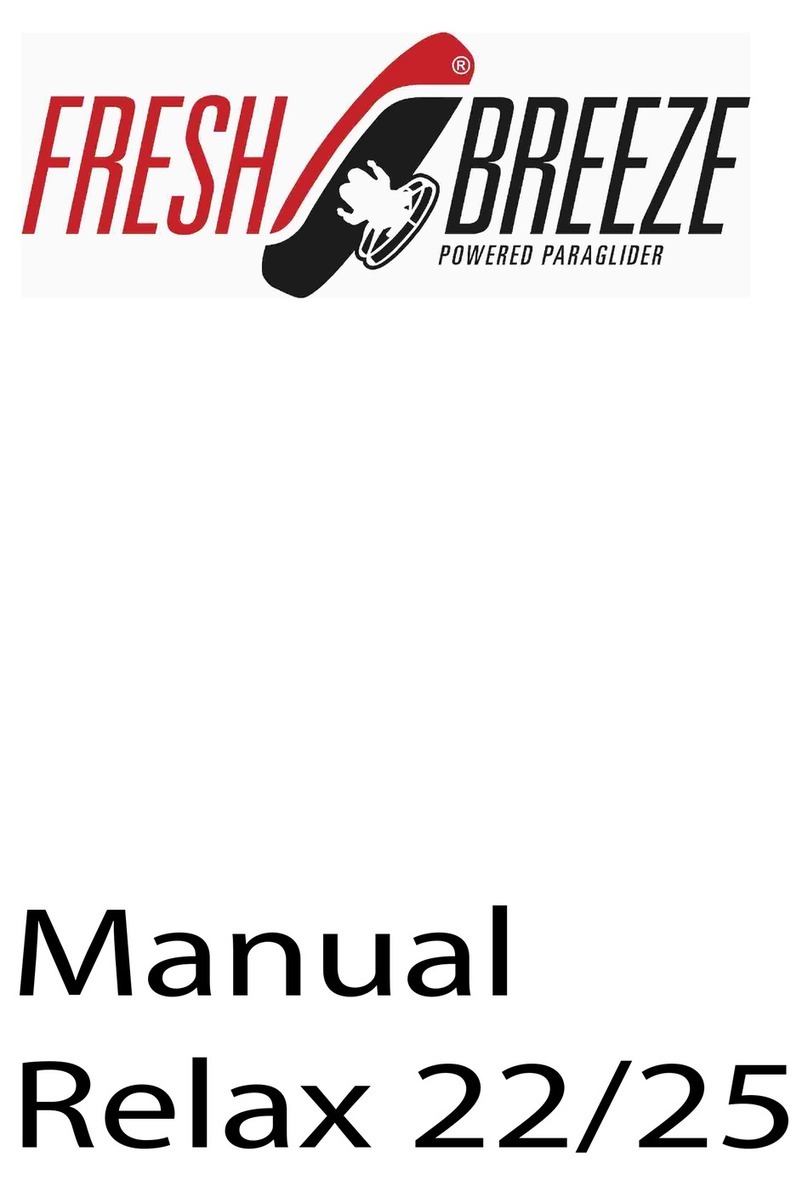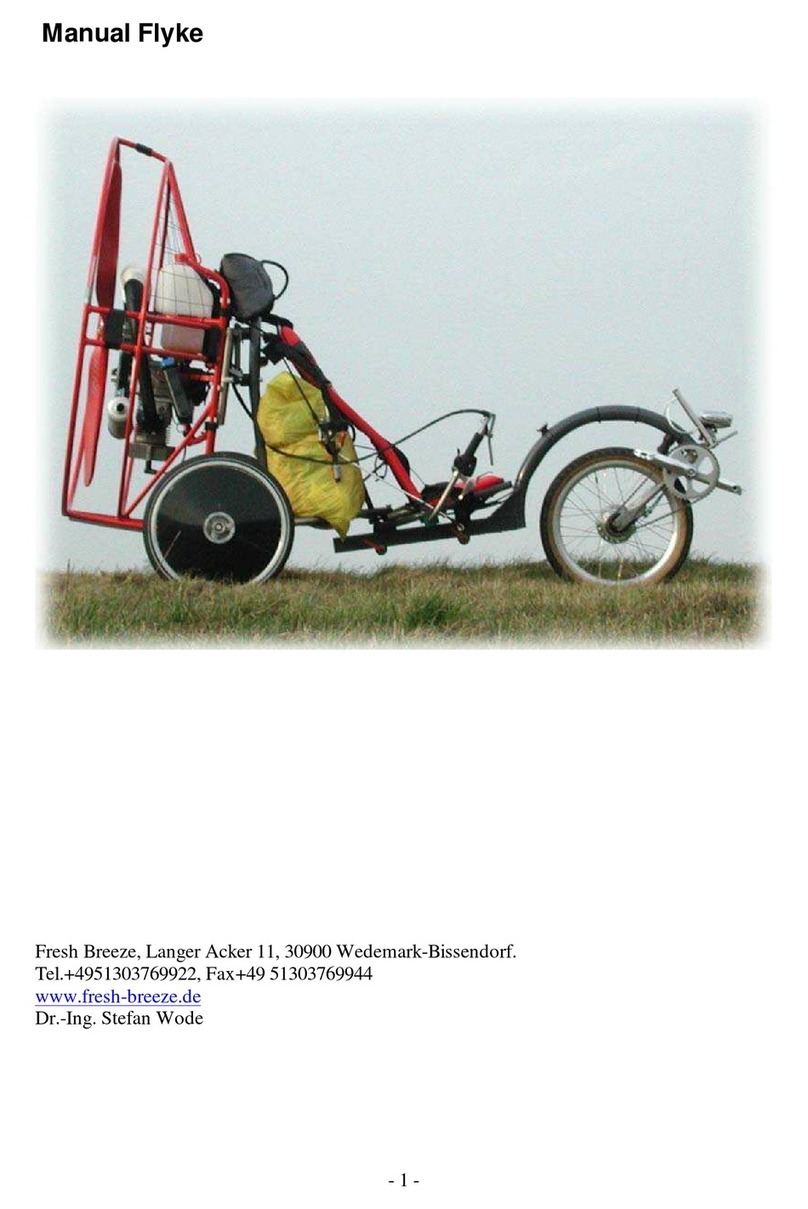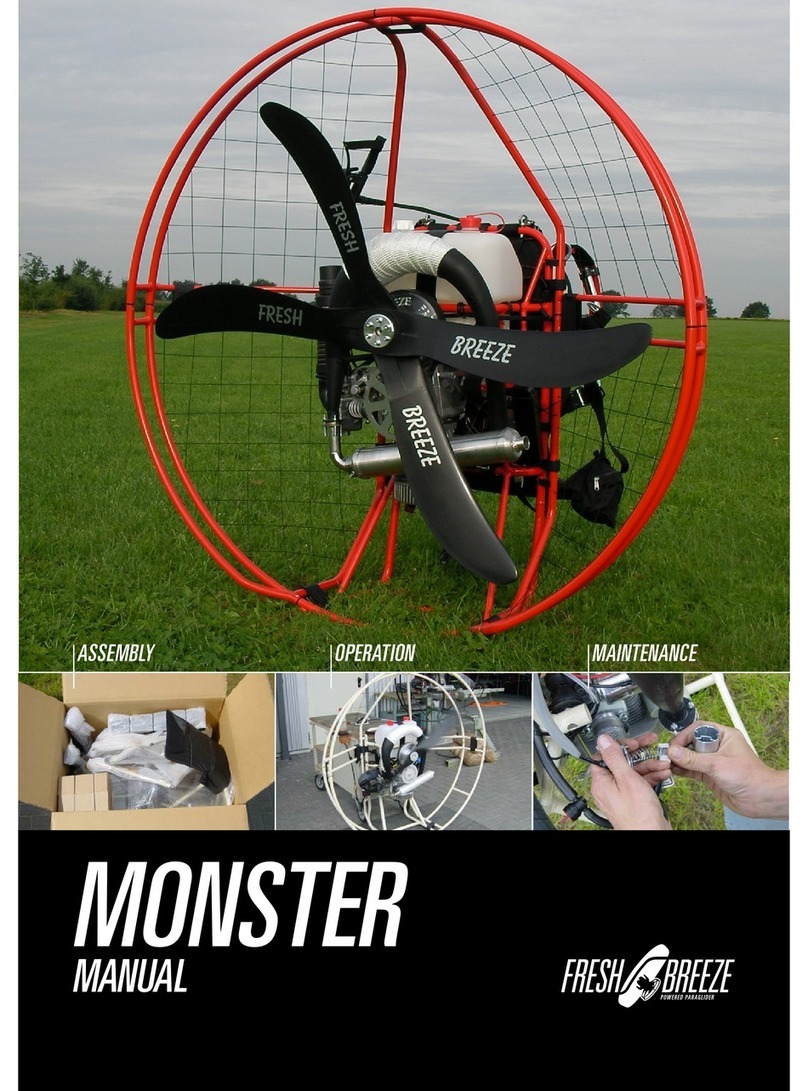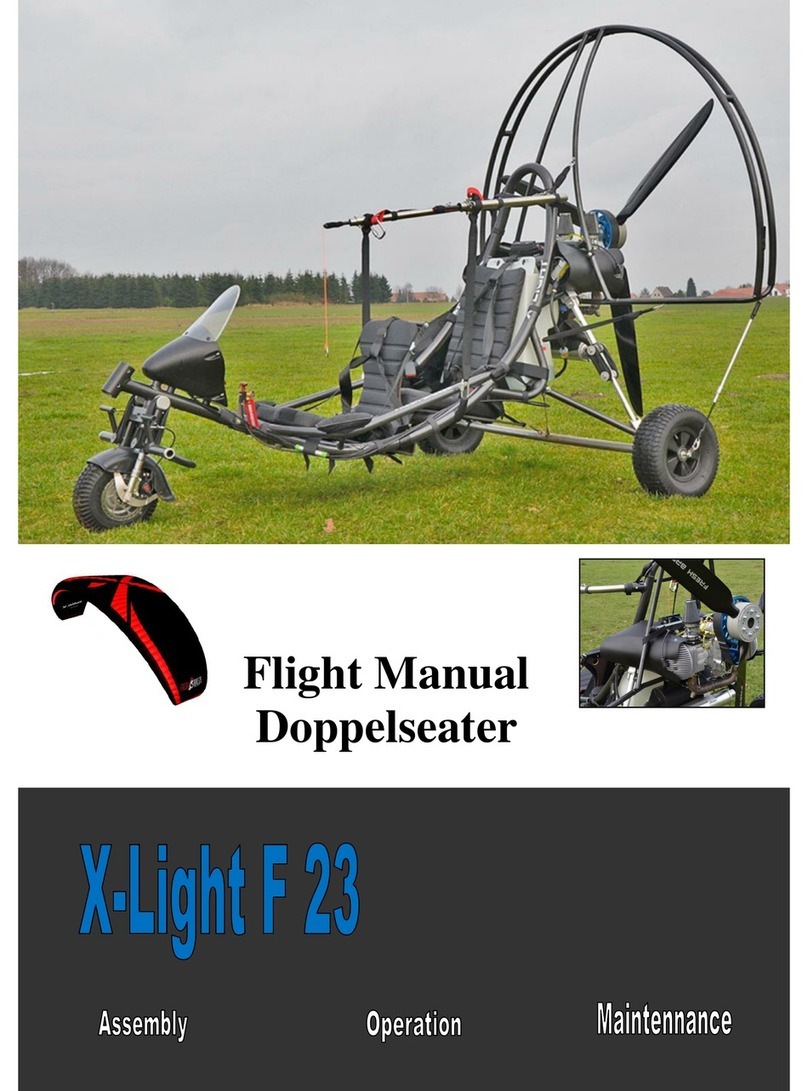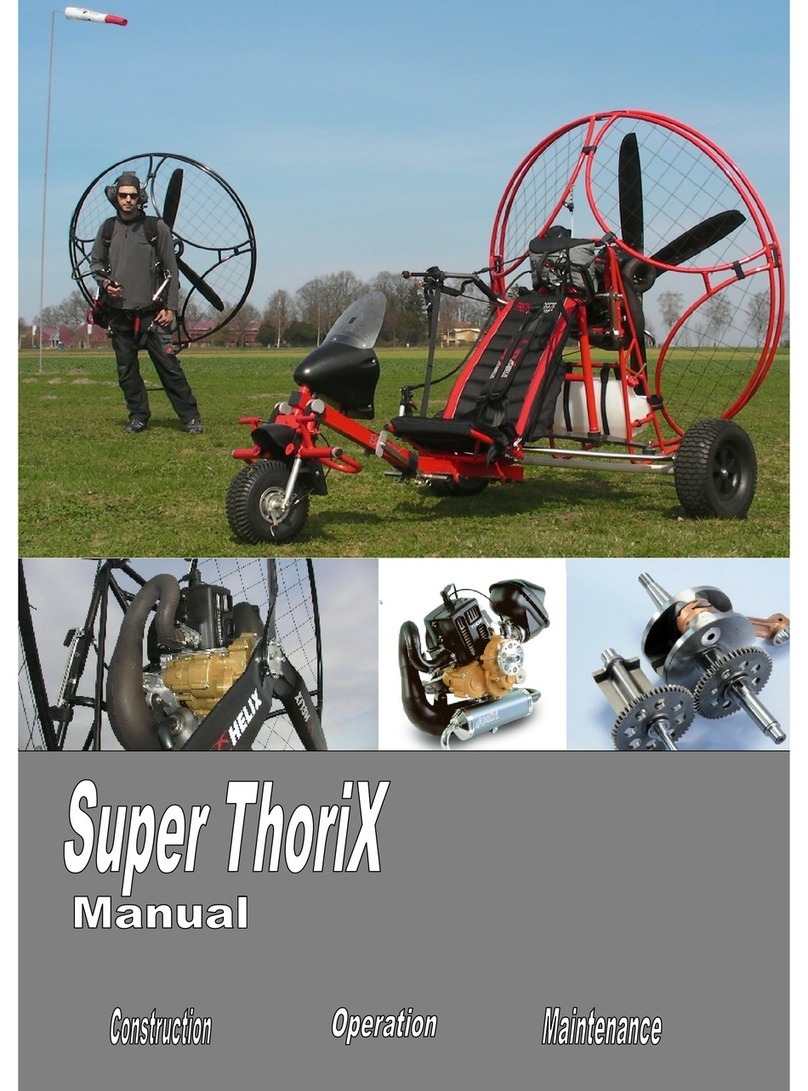Symmetric canopy collapse
If you come out of a strong thermal lift unbraked this may lead
to a collapse of the canopy’s leading edge. However, as a rule
the canopy will rapidly unfold again automatically which you
can support by controlled braking on both sides.
Asymmetric canopy collapse
When flying through turbulences it may happen that part of
the canopy suddenly collapses. This collapsing of the canopy
is particularly dangerous as it may lead to a wrong reaction.
The first reaction at any rate must be to countersteer to
prevent tilting.
As a rule, the folded canopy will reopen automatically. If that
is not the case, deep pulling of the steering lines will suffice.
Hectic pumping is not recommended at all.
Dynamic stall
A dynamic stall is always unpredictable and should therefore
not be brought about deliberately. If severe braking manoeuv-
res are performed from full speed, the canopy will abruptly
tilt backwards. The brakes may then only be released very
gently.
Deep stall
The greatest risk of deep stalling arises if the paraglider is
flown too slowly in strong turbulences. To get out of a deep
stall, you merely have to release both steering lines. If you still
do not succeed in getting out of the deep stall, it is recom-
mended to push the A-risers forward.
Negative spin
An unintended negative spin (trundling) movement mostly
arises from an asymmetric stall, caused by one-sided or too
heavy braking.
You can get out of this spinning movement by gently, but
completely releasing the steering lines and slightly counters-
teering. This will be followed by severe swings.
Steep spiral
One-sided pulling down of a brake narrows the turning flight
to a spiralling turn during which fast sinking is achieved.
Pulling too quickly and strongly may lead to spinning.
B-line stall
From an unaccelerated normal flight, the B-risers are gripped
on both sides above the line buckles. The first 10 cm require
relatively great effort. Then the airflow stalls completely.
Releasing the risers leads to the paraglider accelerating
immediately.
Steering without brakes
The canopy can be steered via the D-risers. A stall is now
more likely to be expected if the D-risers are operated.
FLIGHT UNDER SPECIAL CONDITIONS

